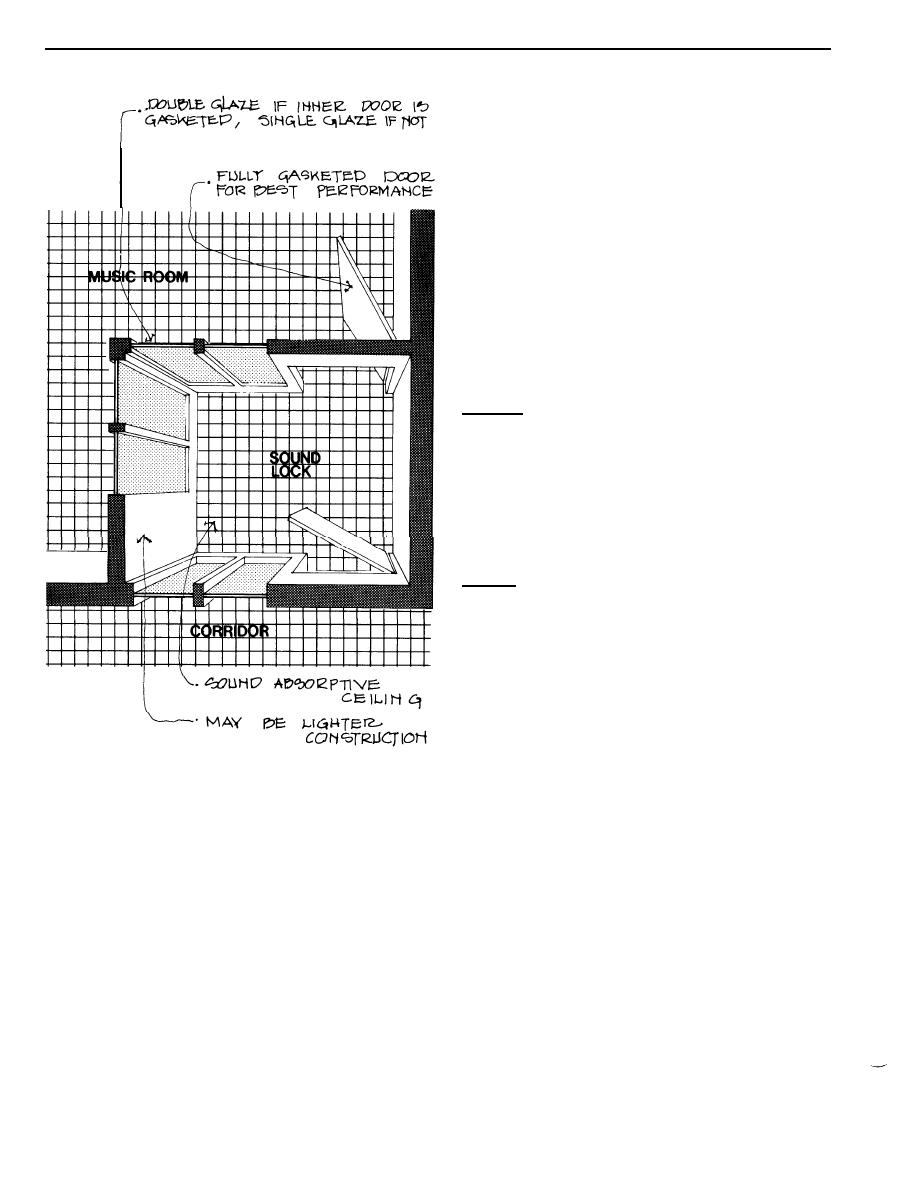
Design Guide: Band Training Facilities
DG-1110-3-119
March 1983
Practical Approaches for Accoustic Construction
D. Doors
Doors are always the nemesis of sound control planning,
since they depend on the performance of seals that are in
constant operation and thus susceptible to deterioration.
A properly constructed wall will always perform, but doors
depend on frequent adjustment or maintenance of the
seals.
Doors are rated by Sound Transmission Class (STC) as
are other constructions, but STCs achievable for doors are
lower than for similarly complex walls etc., and the best
acoustical doors are expensive. Manufacturers recommend
that door STCs be lower than those for walls. Within
reason, this is correct, because doors generally constitute
a small portion of the wall. A range of doors recommended
for band facilities is described below. For reference, a wood,
solid core, ungasketed door rates about STC 20 (see
also Table 5-1).
STC 30 + --minimum for Individual Practice Rooms;
q
also for sound locks (inner door). To achieve this, use
solid wood or fiber-filled metal door, with full gasketing
along all sides including sill and, for double-leaf doors,
where the two leaves meet. Gaskets of various config-
urations are available from most weatherstripping
manufacturers, but they must be compliant (neoprene,
vinyl, etc.) to make an airtight seal. Hollow metal frames
are grouted or packed with insulation. Joints between
frame and wall must be well sealed.
STC 35 + --preferred for Individual Practice Rooms and
q
sound locks; minimum for the larger music rooms. Use
either non-proprietary doors as described above, but
with the least possible seals, very well installed and
adjusted, or proprietary acoustical doors rated at least
STC 35. The latter comprise a complete assembly includ-
ing door, frame and seals.
STC 40 + --preferred for all critical band facility applica-
q
tions, especially for Main Rehearsal and Group Prac-
tice Rooms, if sound locks cannot be provided. Use propri-
etary acoustical doors rated at least STC 40. Good
installation approaching or exceeding STC 50 are thick,
Figure 5-12. Sound Lock--Overhead Plan View
heavy, and very expensive. They may be required in
some cases, but are best avoided by appropriate planning.
Sound locks, shown in figure 5-12, consist of a vestibule
and two doors, and are much more effective than a single
door. Only one of the doors need be gasketed, and even
this is not always essential. Although they take up addi-
tional floor space, sound locks are highly recommended
for the larger music rooms. They offer good performance
without depending on perfect gasketing. With one or both
doors gasketed, their performance could well match that
of the surrounding walls. The inside door, in the sound
lock illustrated, is fully gasketed for best performance. The
glazing should be doubled if the inside door is gasketed,
but may be single if not. The vestibule itself should have
an absorptive ceiling. The vestibule enclosure may be
lighter construction than the heavy outside wall.
5-14


 Previous Page
Previous Page
